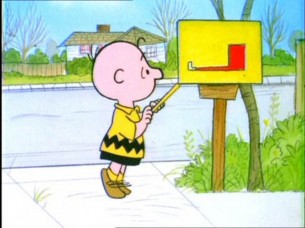This entry is part of a series of #moznewslab posts that I’ll publish over the course of my time as a participant in the Knight-Mozilla learning lab. On the merits of a video idea“that will improve the way that online news is produced or experienced” I was invited to the second round of the Knight-Mozilla Fellowship. I’ll be using posts such as this to reflect and share what I’ve learned in class and develop my final open-source project, which I hope to be invited to prototype in the next round. Your feedback, positive and negative, is very encouraged and welcome. Seriously!
Interactives are popping up in nearly every publication from the excellent mainstream work at the NYTs and UK Guardian to the niche filling investigations at Good Magazine.
Last weeks luanch of Visually only further cements that interactives are here to stay and that people love them.
With the web becoming a visual medium thanks to broadband penetration and advancements in javascript, css and html coding it may seem odd to think that not that long ago there was resistance to allowing journalist and designers to experiment and create such works.
When Shazna Nessa joined the Associated Press years ago as Director of Interactive in New York, she walked into a newsroom where she was asked to define interactives to an organization that kept developers separate from editorial and had never interacted directly with readers until very recently. (The way AP operates is similar to a co-op where member papers share stories, pictures and more with each other, not with readers. The member publications are the ones who share with readers.)
Nessa spoke about introducing new ideas and challenging journalist and developers to work together to tell better stories.
In newsrooms this usually translates into data journalist convincing old school newsosaurs that it’s important to include them in the editorial process and allow them to pitch, investigate and report stories as well. It can sometimes be a battle to show traditional journalist that developers aren’t code monkeys but journalist themselves who could be folded into the newsroom to create interactive narratives to illustrate and further develop a story.
At the AP, they started folding the interactive team into the daily budget cycle and soon were producing not just daily news packages but breaking news stories as well.
(Side note: Why are interactives not embeddable yet?)
The long road
It wasn’t an easy road and one challenge Nessa touched on was the delicate balance of talking tech to non-tech folks, as in the balance of not assuming they don’t know anything but also not to get too in the technical details as to lose the message and talk about what the product can do.
This got me thinking about my open source project for #MozNewsLabs and how I might go about conveying my ideas.
Luckily I have an advantage of having worked in a newsroom for years and know how newsrooms think.
One funny thing I’ve learned is that, for as much as newsrooms love finding new and exciting things to gather and report on, they’re also very reisitant to change and anything that seems like it might be hard to grasp. This isn’t to say that there’s anything wrong with that however, it’s part of the culture.
Journalist are generally underpaid, feel unappreciated, stressed-out, thinking about The Wire and are under many professional and personal pressures to move quickly and get it right the first time. For many, asking them to slow down and try to wrap their mind around a foreign concept when they have deadlines, kid’s soccer games, beats to check and birthday gifts for the wife to buy on their mind, is really asking a lot.
But that doesn’t mean journalist don’t want to learn. To the contrary, many of us became journalist because we are curious by nature and love to learn new things. If you think of it that way, the question really is, how best to explain your complex new idea to an edger audience that may not speak tech, but speaks storytelling.
Boil it down
It all comes back to the same question I as a journalist always ask myself on the behalf of readers: what is it and why should I care?
With VidScribe, it’s a tool that will be simple to use, speed up workflow and fills a massive void in publishing, distribution, archiving and curating information. Plus it’ll just make life easier for multimedia producers at every level.
And speaking from experience and the (little) feedback I’ve gotten, it’s a tool that is needed- it’s not a sexy tool, but it’s one that solves many problems in producing and distributing news video.
With that in mind, for my open source project, I think I’d be better served not by breaking down how it works (which I’ve already touched on here if you’re curious) but by why you’d want to use it.
- For video shooters and producers VidScribe provides automatic transcription to facilitate getting into crafting a story faster, timeline mapping for supplemental content, embedding of written stories, branching curated content and a standardized IPTC-like workflow to speed things up. The process should be familiar, painless and welcomed by still shooters who have moved into video.
- For management, VidScribe incorporates standardized by line credits, copyright info boxes, archiving and provides the ground work for monitizing video.
- For viewers VidScribe will allow an avenue for seeking out videos via search engines, social sharing options with bookmarking to the timeline, closed captioning and commenting to timeline specific points.
And once the ground work of transcription and timeline mapping is laid, a whole slew of opportunities for creativity and plug-ins open up for story developers and viewers to create and utilize.
Challenge
In fact I’d like to hear from you what you’d like to see added or subtracted from such a tool. Leave me a comment below and let’s figure out how to solve this dilemma in web news video.
If you’d like to contribute, comment, collaborate or insult the open source project VidScribe, please drop me a line!







2 comments
Mark Boas says:
Aug 1, 2011
Hey Shaminder I’m very excited to see this as it sounds like it crosses-over with what I have in mind for my #MozNewsLab project. I’m thinking word level aligned transcripts of video and audio that can easily be combined, shared and searched : http://happyworm.com/blog/2011/08/01/introducing-the-hyperaudio-pad-working-title/ I’ve already done some work on this and it looks promising. Let me know if you think it is something we can collaborate on.
sdulai says:
Aug 3, 2011
Hi Mark, I’ve sent you a PM over at the #moznewslabs. Your project looks awesome and I think we should talk in more detail and strongly consider collaborating to turn our great ideas into awesome ideas.